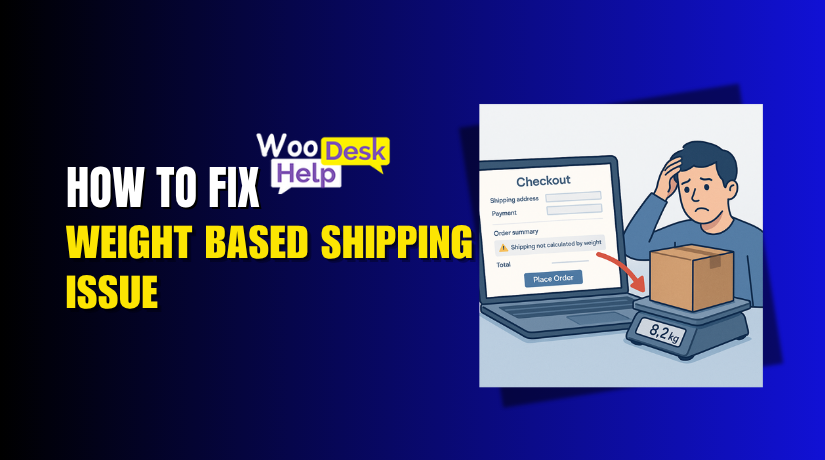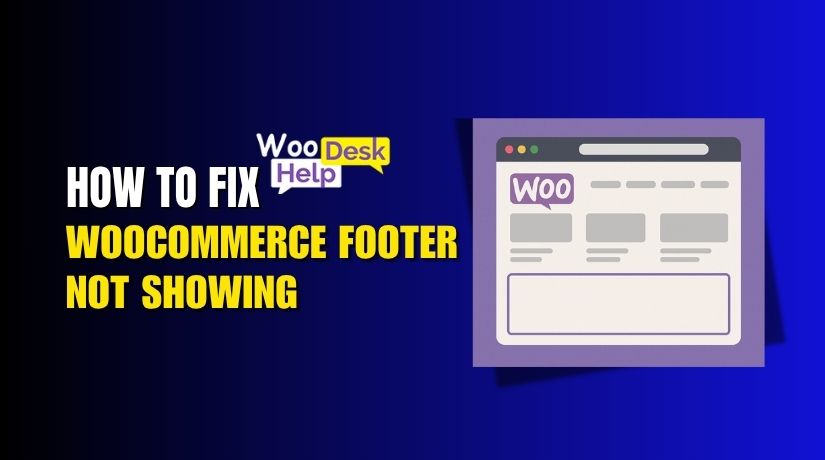
How to Fix Elementor Not Loading While Editing: Troubleshooting Guide
Table of Contents
Introduction
One of the most widely used WordPress page builders is Elementor. It enables non-programmers to construct stunning websites. Its drag-and-drop editor makes designing easy and efficient.
However, sometimes Elementor does not load while editing a page. This can be frustrating, especially when you’re in the middle of designing. Instead of loading the editor, you might see a blank screen or a spinning loader. Because of this problem, users are unable to modify their websites.
You are not alone if Elementor is having trouble loading. This issue affects a lot of users. The good news is that basic troubleshooting techniques can resolve it. Understanding why this occurs is crucial before moving on to solutions.
This guide will explain the possible reasons and fixes for this issue. You will have a functional Elementor editor at the end. Let’s begin by understanding why Elementor fails to load.
Understanding the Elementor Not Loading Issue
When Elementor doesn’t load, it can appear in different ways:
- A loading screen appears and the editor becomes stuck.
- You see a blank or white page instead of the editor.
- A spinning loader keeps running without opening the editor.
- There is no “Edit with Elementor” button.
Numerous things may contribute to these problems. Finding the best answer will be made easier if you comprehend them. Below are the most common reasons why Elementor fails to load.
- Plugin Conflicts
Elementor works with various plugins, but some may cause conflicts. Incompatible plugins may prevent Elementor from loading. Performance optimization and caching plugins are the most common culprits.
- Theme Incompatibility
Certain themes might not work perfectly with Elementor. If the theme is outdated or has custom scripts, it can cause Elementor to crash. The issue can be found by switching to the default WordPress theme.
- Low WordPress Memory Limit
Elementor needs sufficient memory to function properly. If your site has a low memory limit, Elementor may fail to load. Increasing the WordPress memory limit can resolve this issue.
- Outdated WordPress, Plugins, or Elementor
Running out-of-date software can cause problems with compatibility. Your WordPress version, Elementor, and other plugins could not function correctly if they are not updated. Keeping everything updated ensures smooth performance.
- Server or Hosting Issues
The performance of Elementor is significantly influenced by your hosting company. If the server resources are limited, Elementor may not load. The PHP version and other server settings must meet Elementor’s requirements.
- JavaScript Errors
JavaScript is essential for Elementor’s editor to work. Elementor may not load if there are issues in the browser console. Checking for errors in the developer tools can help identify the problem.
How to Fix Elementor Not Loading While Editing & Basic Troubleshooting
If Elementor is not loading, start with some quick troubleshooting steps. Without complicated settings or technological adjustments, these easy methods can address the problem. Try these methods before moving to complex solutions.
- Refresh the Page & Clear Cache
Occasionally, the issue is transient and resolves with a refresh. Press Ctrl + F5 (Windows) or Cmd + Shift + R (Mac) to hard refresh. This clears temporary files and reloads the page properly.
Clear the cache in your browser if it doesn’t resolve the issue. Stored cache files can cause Elementor to load incorrectly. This can be accomplished in the Privacy & Security > Clear Browsing Data section of your browser’s settings.
Also, clear the WordPress cache if you use caching plugins. Old data is stored by well-known plugins like LiteSpeed Cache, W3 Total Cache, and WP Rocket. Clearing the cache ensures Elementor loads the latest version of your site.
- Check Your Internet Connection & Browser
A slow or unstable internet connection may prevent Elementor from loading. Visit other websites to check your connection. Restart your modem or switch networks if they’re sluggish.
Also, try a different browser. Elementor works best with Google Chrome or Firefox. Some extensions in Safari, Edge, or Opera can block scripts, causing Elementor to hang.
Disable browser extensions, especially ad blockers and script blockers. These can interfere with Elementor’s editor. To see if extensions are the problem, launch Elementor in Incognito Mode.
- Deactivate & Reactivate Elementor
Sometimes, Elementor itself may have a minor glitch. Deactivate Elementor from the Plugins section in WordPress. Wait a few seconds, then reactivate it. This resets the plugin and can resolve minor errors.
You can also reinstall Elementor. After deleting the plugin, get the most recent version and install it. This ensures you are using a fresh and updated copy.
- Enable Safe Mode in Elementor
Elementor has a Safe Mode feature that disables conflicting plugins and themes. This helps you check if an external issue is stopping Elementor from loading.
To enable Safe Mode:
- Go to Elementor > Settings in your WordPress dashboard.
- Click on the Advanced tab.
- Toggle Safe Mode to “Enable.”
- Reload Elementor and check if it works.
If Elementor loads in Safe Mode, the issue is likely with a plugin or theme. The software that is in conflict must be identified.
Advanced Troubleshooting Steps
If Elementor is still not loading after trying the basic fixes, deeper troubleshooting is needed. The difficulty could be caused by a number of technological reasons. Follow these advanced steps to identify and fix them.
- Checking for Plugin Conflicts
Many WordPress websites use multiple plugins, but not all work well together. Elementor may not load because of conflicts with some plugins.
How to Check for Plugin Conflicts:
- Go to WordPress Dashboard > Plugins > Installed Plugins.
- Deactivate all plugins except Elementor.
- Try loading Elementor again. If it does, the problem is with a plugin.
- After each reactivation, check Elementor and reactivate each plugin individually.
- Once Elementor stops loading, the last activated plugin is the culprit.
Look for an alternative or check for updates if you discover a conflicting plugin. Some plugins may have compatibility fixes in their latest versions.
- Testing Theme Compatibility
Sometimes, the theme you are using is not fully compatible with Elementor. A theme with heavy scripts or outdated code may prevent Elementor from working.
How to Test Theme Compatibility:
- Go to WordPress Dashboard > Appearance > Themes.
- Activate a default WordPress theme like Twenty Twenty-Four.
- Try loading Elementor again.
Your current theme is the problem if Elementor functions with the default theme. Look for theme updates or get help from the theme creator.
- Increasing WordPress Memory Limit
Elementor needs enough memory to function properly. If your website has a low memory limit, Elementor may fail to load.
How to Increase Memory Limit:
- Open your wp-config.php file in File Manager or via FTP.
- Find this line:
define(‘WP_MEMORY_LIMIT’, ’40M’);
- Increase the memory limit by changing it to:
define(‘WP_MEMORY_LIMIT’, ‘256M’);
- Save the file and refresh your site.
If you can’t edit the file, contact your hosting provider. They are able to raise your memory limit.
- Updating WordPress, Elementor, and Other Plugins
Compatibility problems might arise from using out-of-date software. Keeping everything updated ensures smooth performance.
How to Update Everything Safely:
- Go to Dashboard > Updates and check for available updates.
- Update Elementor after updating WordPress.
- Update all themes and plugins to the most recent versions.
- After updating, clear your cache and reload Elementor.
If Elementor stopped working after an update, consider rolling back to a previous version. To go back to a previous stable version of Elementor, utilize the WP Rollback plugin.
- Checking Server & PHP Settings
Your hosting environment affects how Elementor works. If your server settings are not optimal, Elementor may not load.
Recommended Server Settings for Elementor:
- PHP Version: 7.4 or higher (PHP 8+ recommended).
- Memory Limit: 256MB or more.
- Max Execution Time: At least 300 seconds.
How to Check & Update PHP Version:
- Open your hosting control panel (cPanel or something similar) and log in.
- Look for PHP Selector or PHP Settings.
- Update to PHP 8+ if available.
Ask for help from your hosting company if you’re not sure. They can adjust the settings for you.
Fixing Elementor Stuck on Loading Screen
If Elementor gets stuck on the loading screen, it can be frustrating. The editor might freeze, show a blank page, or keep spinning endlessly. This issue is often caused by JavaScript errors, browser problems, or conflicts with other plugins. Follow these steps to fix it.
- Check for JavaScript Errors in the Browser Console
JavaScript is essential for Elementor’s editor to function properly. If there are JavaScript errors, Elementor may fail to load.
How to Check for JavaScript Errors:
- Open Google Chrome and visit your WordPress site.
- Right-click anywhere on the page and select Inspect.
- Click on the Console tab.
- Look for red error messages related to Elementor.
A plugin or script is probably the source of the problem if you observe JavaScript problems. Deactivating unnecessary plugins or switching themes can help.
- Disable Browser Extensions and Try Incognito Mode
Some browser extensions block scripts needed for Elementor. Ad blockers, security extensions, and script blockers can interfere with the editor.
How to Fix Browser Issues:
- Go to the settings of your browser and turn off all extensions.
- Try loading Elementor once more after restarting the browser.
- Open Incognito Mode (Ctrl + Shift + N in Chrome) and test Elementor.
If Elementor works in Incognito Mode, an extension is likely causing the issue. To identify the offender, enable extensions one at a time.
- Clear Browser and WordPress Cache
Cached files can sometimes cause Elementor to load incorrectly. The browser loads a new version of the page when the cache is cleared.
How to Clear Cache:
- For Browsers:
- Open browser settings and go to Privacy & Security.
- Click Clear Browsing Data and select “Cached Images and Files.”
- Click Clear Data and restart the browser.
- For WordPress:
- If using caching plugins (WP Rocket, W3 Total Cache, etc.), clear the cache from the plugin settings.
- Clear the Elementor cache by going to Elementor > Tools > Regenerate Files & Data.
After clearing the cache, reload Elementor and check if it works.
- Revert to a Previous Version of Elementor
If the issue started after updating Elementor, the latest version may have a bug. Reverting to an earlier version may be beneficial.
How to Roll Back Elementor:
- Go to Elementor > Tools > Version Control.
- Click on Rollback Version and select a previous version.
- Click Reinstall and test if Elementor loads.
Getting Help & Prevention
If Elementor is still not loading after trying all fixes, don’t worry. You may need to get support or take preventive measures. Here’s how to contact Elementor support and avoid future issues.
- Contacting Elementor Support & Getting Help
If none of the troubleshooting steps worked, it’s time to seek help. Elementor offers different ways to get support.
Where to Get Help:
- WooHelpDesk.com – Visit WooHelpDesk for expert WordPress and Elementor troubleshooting assistance.
- Elementor Help Center – Check Elementor’s official support page for guides and FAQs.
- Elementor Community Forum – Join the Facebook Elementor Community to discuss issues with other users.
- WordPress Support Forum – Post issues on the WordPress Elementor Forum if using the free version.
- Elementor Premium Support – If you have Elementor Pro, submit a support ticket for priority help.
What to Include in a Support Request:
When contacting help, describe the problem in full. The support staff can help you more quickly as a result.
- Describe the problem clearly (e.g., Elementor stuck on loading screen).
- Mention the troubleshooting steps you’ve already tried.
- Provide screenshots or screen recordings for better understanding.
- Include technical details like WordPress version, PHP version, and active plugins.
With complete information, Elementor’s support team can find a solution faster.
- Preventive Measures to Avoid Future Issues
Use these suggested practices to avoid future Elementor loading issues.
- Keep WordPress, Plugins, and Themes Updated
- Update WordPress and Elementor regularly to avoid compatibility issues.
- Enable automatic updates for essential plugins.
- Before updating, check Elementor’s changelog to see known issues.
- Use a Compatible and Lightweight Theme
- Select a theme that works with Elementor, such as Astra or Hello Elementor.
- Avoid themes with excessive custom scripts that may slow Elementor.
- Optimize Website Performance
- Choose a hosting company that is dependable, quick, and has adequate server capacity.
- Enable caching but exclude Elementor pages from aggressive caching.
- Use plugins such as Smush or Imagify to optimize photos.
- Increase WordPress Memory Limit
- Set the memory limit to at least 256MB to prevent loading issues.
- If you require larger memory restrictions, get in touch with your hosting company.
- Disable Unnecessary Plugins
- Only install plugins that are essential for your site.
- Avoid using multiple page builders with Elementor.
- Use troubleshooting mode to detect plugin conflicts early.
By following these steps, you can prevent Elementor-related issues before they happen.
Conclusion
Elementor not loading while editing can be frustrating. However, most issues have simple fixes. Start with quick troubleshooting, like refreshing the page and clearing the cache. If the issue persists, look for low memory constraints, theme problems, or plugin conflicts. Keeping WordPress, Elementor, and plugins updated prevents future problems.
If none of the fixes work, seek help from WooHelpDesk.com or Elementor support. The resolution procedure is accelerated by providing comprehensive information. By following these steps, Elementor will run smoothly, allowing you to design amazing websites without interruptions. 🚀




